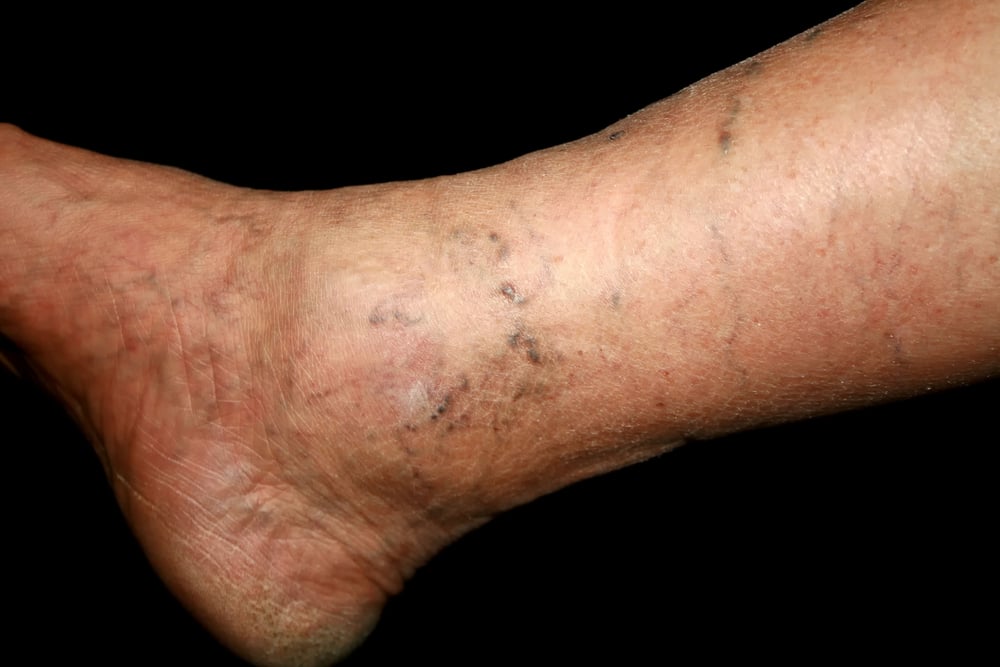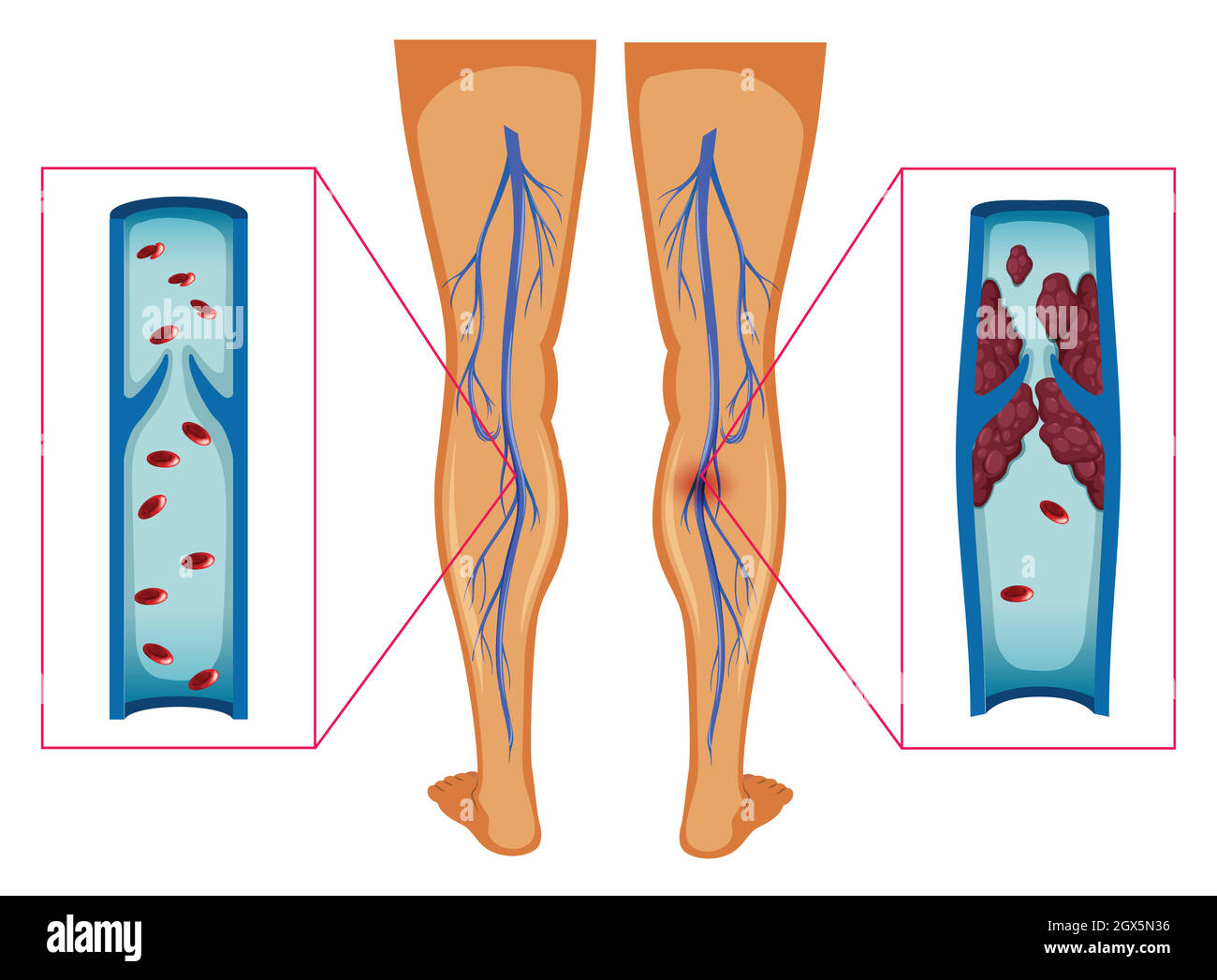Blood Clot In Leg Pictures: A Comprehensive Guide To Understanding And Recognizing The Signs
Alright folks, let me just cut straight to the chase here. Blood clot in leg pictures is a topic that can be pretty intense, but it’s super important. You see, blood clots in the leg are no joke. They can cause serious health issues if not addressed early. And guess what? Pictures can be a game-changer when it comes to identifying potential problems. So, whether you’re dealing with this personally or just want to be informed, we’re diving deep into everything you need to know. Don’t worry, I’ll keep it conversational and easy to digest.
Now, before we dive in, let’s talk about why this matters. A blood clot in the leg, medically known as deep vein thrombosis (DVT), can lead to complications like pulmonary embolism. Yeah, that’s a big word, but it’s basically a clot that travels to your lungs. Not cool, right? And while medical terms can be overwhelming, having visuals—like pictures—can help you spot the signs early and take action. That’s why we’re here today.
So, let’s break it down. This guide will cover everything from recognizing the symptoms, understanding the risks, and even show you some examples of what blood clots in the leg might look like. Think of it as a crash course with a dash of humor and a sprinkle of expert knowledge. Ready? Let’s get started!
- Radieschen Einlegen So Einfach Gehts Leckere Rezepte
- Dortmunds Indoorspa Interaktive Spiele Mehr Entdeckungstour
What Exactly is a Blood Clot in the Leg?
Alright, let’s start with the basics. A blood clot in the leg is when blood thickens and clumps together, forming a solid or semi-solid mass. This usually happens in the deep veins of your legs, hence the term "deep vein thrombosis" or DVT. Now, here’s the kicker—these clots can block blood flow, leading to swelling, pain, and in severe cases, life-threatening complications.
But why does this happen? Well, there are a bunch of factors that can increase your risk, like sitting for long periods (think long flights), smoking, obesity, or even certain medical conditions. And let’s not forget, genetics can play a role too. So, if someone in your family has had issues with blood clots, it might be worth keeping an eye out.
Why Blood Clot Pictures Matter
Here’s the thing—pictures can be incredibly helpful when it comes to identifying DVT. They can give you a visual reference of what to look for, like redness, swelling, or discoloration in the affected area. Sure, symptoms can vary from person to person, but having a visual cue can make all the difference.
For instance, you might notice your leg looking puffier than usual or feeling warm to the touch. Some people even report a dull ache or cramping sensation. And while these signs can sometimes be mistaken for other conditions, like a pulled muscle, blood clot pictures can help you differentiate between the two.
Recognizing the Symptoms of DVT
Okay, so what exactly should you be on the lookout for? Here’s a quick rundown of the most common symptoms:
- Swelling in one or both legs
- Pain or tenderness in the affected leg
- Redness or discoloration of the skin
- Warmth in the area of swelling
- A feeling of heaviness in the leg
Now, these symptoms might not always scream "blood clot," which is why visuals are so important. Sometimes, a picture really is worth a thousand words. And let’s be honest, who doesn’t love a good before-and-after comparison?
When Should You See a Doctor?
If you’re experiencing any of the symptoms mentioned above, it’s crucial to seek medical attention. But what if you’re not sure? That’s where blood clot pictures come in handy. They can help you assess whether what you’re seeing is cause for concern.
And remember, time is of the essence here. If you suspect a blood clot, don’t wait around hoping it’ll go away. Get it checked out ASAP. Trust me, your future self will thank you.
Causes and Risk Factors of Blood Clots in the Leg
Let’s talk about the "why" behind blood clots. There are several factors that can increase your risk, including:
- Prolonged immobility (like long flights or bed rest)
- Obesity
- Smoking
- Pregnancy
- Certain medications, like birth control pills
- Family history of blood clots
And let’s not forget, certain medical conditions like cancer, heart disease, or autoimmune disorders can also up your risk. So, if you fall into any of these categories, it’s worth keeping an extra eye out for any signs or symptoms.
How Genetics Play a Role
Genetics can be a sneaky factor when it comes to blood clots. If someone in your family has had issues with clotting, you might be more prone to it too. This is where knowing your family history comes in handy. And hey, if you’re not sure, now’s a great time to ask around. Knowledge is power, right?
Diagnosing Blood Clots in the Leg
So, how do doctors actually diagnose a blood clot? There are a few methods they might use, including:
- Ultrasound: This uses sound waves to create images of your veins and detect any clots.
- CT or MRI scans: These can provide detailed images of your veins and surrounding tissues.
- Blood tests: Certain tests can check for proteins in your blood that might indicate a clot.
And while pictures can give you a general idea of what to look for, a proper diagnosis can only come from a healthcare professional. So, if you’re worried, don’t hesitate to get it checked out.
The Importance of Early Detection
Here’s the deal—early detection can make all the difference. The sooner a blood clot is identified and treated, the better your chances of avoiding serious complications. And let’s face it, who wants to deal with a pulmonary embolism? Not me, and I’m guessing not you either.
Treatment Options for Blood Clots
Alright, so let’s say you’ve been diagnosed with a blood clot. What’s next? There are several treatment options available, including:
- Anticoagulants: These medications help prevent the clot from getting bigger and reduce the risk of new clots forming.
- Thrombolytics: These drugs can dissolve the clot, but they’re usually reserved for more serious cases.
- Compression stockings: These can help reduce swelling and improve blood flow.
And of course, lifestyle changes like staying active, quitting smoking, and maintaining a healthy weight can also play a big role in preventing future clots.
Preventive Measures You Can Take
Prevention is key when it comes to blood clots. Here are a few tips to keep in mind:
- Stay active and move around regularly, especially if you’re sitting for long periods.
- Stay hydrated and avoid excessive alcohol or caffeine consumption.
- Wear compression stockings if you’re at risk.
- Get regular check-ups, especially if you have a family history of blood clots.
Real-Life Examples and Blood Clot Pictures
Let’s talk about some real-life examples. There are plenty of cases where people have noticed symptoms early and sought treatment, avoiding serious complications. And guess what? Blood clot pictures played a big role in their decision-making process.
For instance, you might see examples of legs with noticeable swelling or discoloration. These pictures can help you understand what to look for and when to take action. And let’s be honest, who doesn’t love a good success story?
Where to Find Reliable Blood Clot Pictures
Now, if you’re looking for reliable blood clot pictures, there are a few places you can turn to. Medical websites, like Mayo Clinic or NHS, often have great resources. And of course, talking to your doctor can provide you with personalized visuals that match your specific situation.
Conclusion: Take Action and Stay Informed
Alright folks, that’s a wrap. Blood clots in the leg might sound scary, but with the right knowledge and resources, you can stay informed and take action early. Remember, blood clot pictures can be a powerful tool in recognizing the signs and seeking treatment. So, keep an eye out, stay proactive, and don’t hesitate to reach out to your healthcare provider if you have any concerns.
And hey, if this guide has been helpful, why not share it with someone you know? Or leave a comment below with your thoughts. Let’s keep the conversation going and help each other stay healthy and informed.
Table of Contents
- What Exactly is a Blood Clot in the Leg?
- Why Blood Clot Pictures Matter
- Recognizing the Symptoms of DVT
- When Should You See a Doctor?
- Causes and Risk Factors of Blood Clots in the Leg
- How Genetics Play a Role
- Diagnosing Blood Clots in the Leg
- The Importance of Early Detection
- Treatment Options for Blood Clots
- Preventive Measures You Can Take
- Real-Life Examples and Blood Clot Pictures
- Where to Find Reliable Blood Clot Pictures
- Sensation Leyla Lahouar Sieg Antrag Zukunftsplne
- Emily Willis Karriere Tod Gerchte Just This One Time Video

Blood Clot In Leg Symptoms «

Blood Clot in the Leg Symptoms Facty Health

Blood clot in the leg Stock Vector Images Alamy